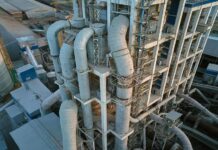The importance of maintenance cannot be stressed enough, particularly within the energy sector. It goes without saying that oil and gas are always in high demand. With demand remaining consistently high, companies are under pressure to maintain production. This can only be ensured with a robust maintenance plan.
Previously companies evolved from implementing a reactive maintenance plan to a preventative maintenance plan. As businesses continue to evolve, so must the maintenance plans being implemented. It is for this reason that many companies within the oil and gas sector have begun implementing predictive maintenance plans.
What is predictive maintenance?
Predictive maintenance can be defined as a proactive approach to maintenance management. Like most focus areas within maintenance management, predictive maintenance aims to ensure optimal operations, maintain assets and machinery and reduce the possibility of a breakdown.
However, unlike preventative maintenance, which schedules maintenance at specific intervals, predictive maintenance takes a proactive approach and attends to the maintenance needs of an asset when necessary.
This means that predictive maintenance uses asset and machinery data to monitor the condition and output, possible defects and reductions in output, will be picked up like red flags. This leads a company’s maintenance team to attend to the machine and conduct repairs or maintenance. For predictive maintenance to be conducted effectively, it must be done in conjunction with a CMMS.
What is a CMMS?
A CMMS is a computerized maintenance management system. With a cloud-based CMMS, companies can access a platform and upload, or review, maintenance, and machinery data. Often with only a mobile device, allowing for more flexibility and accessibility. The ability to upload and store data while having the flexibility to work from anywhere makes a CMMS invaluable when implementing predictive maintenance.
Why is predictive maintenance vital within the oil and gas sector?
Unforeseen breakdowns can have a significant impact on an oil and gas company. Both from a financial and reputational point of view.
Reputational damage will be avoided
Oil and gas is a required component in many goods and services. From cooking to manufacturing. This means the demand for the products will always be high. If a company cannot fulfill this demand and produce the required amount needed for their customer. Due to an unforeseen breakdown occurring to some of their equipment, it will reflect badly on the oil and gas company. A good reputation is vital for a company’s success. This reputation can be affected by a breakdown.
Reduce costs associated with a breakdown
From a financial point of view, the reason why preventative maintenance is crucial is because of its ability to reduce costs.
A breakdown within an oil refinery can be costly. The machinery used is highly specialized and extremely expensive. This means that in the event of a breakdown, a specialist may need to be called out to attend to the issue. During the time taken to attend to the machinery, the refinery will be shut down. Oil and gas companies want to avoid an unplanned shutdown as it means that the company is losing money.
Reduce costs associated with overtime
Another issue that companies will have to deal with is starting production again after a shutdown. As oil and gas companies are often under strict time frames to provide a product this may mean that the employees will have to work overtime. This cost can be avoided through preventative maintenance.
Ensure that machinery is safe for employees to operate
An often-overlooked reason as to why predictive maintenance is vital is the peace of mind it provides. Machinery is unpredictable, and many variables can lead to them breaking down. Breakdowns can also be dangerous for the employees operating the machine, by implementing an advanced system such as predictive maintenance. An oil and gas company can now go further in enhancing the safety of their employees. When a malfunction is picked up, maintenance can be conducted quickly rather than the problem continuing and posing a risk to the employee and the company. It is also important to note that by reducing injuries that occur within the workplace, companies will also be saving on the costs associated with it as well.
How can I implement a predictive maintenance system?
Implementing a predictive maintenance system is often the biggest barrier faced by employees. However, it is not a difficult process. By setting up a CMMS maintenance managers can track their machinery and output. The information can be used to develop reports, allowing companies to accurately predict when maintenance is required based on the past. The data collected can also help employees accurately diagnose the problem and efficiently correct it.
Conclusion
The oil and gas industry is a complex one to operate within. Simplifying processes where possible will lead to increased success for companies. With the reasons stated and the benefits that are on offer, implementing a CMMS and predictive maintenance program would be the responsible decision to make. Fortunately there are CMMS systems developed for the oil and gas sector.





































